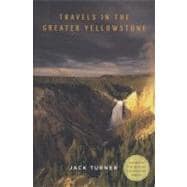
Note: Supplemental materials are not guaranteed with Rental or Used book purchases.
Purchase Benefits
What is included with this book?
Jack Turner is the president of Exum Mountain Guides and School of American Mountaineering in Grand Teton National Park. He has led treks in India, Pakistan, Nepal, China, Tibet, Bhutan, and Peru. His first book was a collection of environmental essays, The Abstract Wild; it was followed by a memoir, Teewinot: A Year in the Teton Range. He is a visiting scholar at the University of Utah and has been honored with a 2007 Whiting Foundation Writer’s Award. He lives in Grand Teton National Park with his wife, Dana, and their dog, Rio.
The New copy of this book will include any supplemental materials advertised. Please check the title of the book to determine if it should include any access cards, study guides, lab manuals, CDs, etc.
The Used, Rental and eBook copies of this book are not guaranteed to include any supplemental materials. Typically, only the book itself is included. This is true even if the title states it includes any access cards, study guides, lab manuals, CDs, etc.